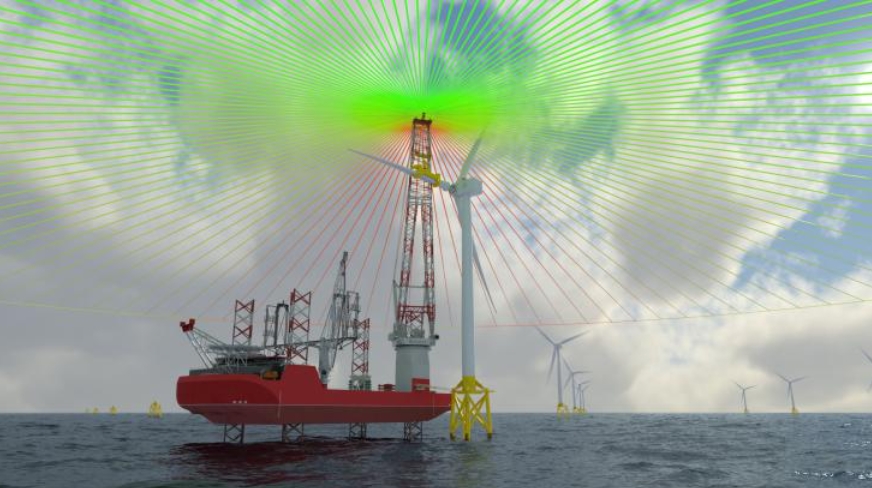
The system, called Wind Gust Buster, assists crane operators and lifting supervisors when working with the installation of large objects at considerable height, by providing information on the incoming wind 360° around the boom tip.
Measurement of the incoming wind, with up to 10 km distance, is done by application of a LiDAR system on the crane’s boom tip, scanning the horizontal area.
The measurement data is post-processed by the crane’s automation system and can be shown to both the crane operator as well as to other people involved, such as on the crane vessel’s bridge.
A typical prediction window is five to eight minutes ahead of the wind gust coming in, which should allow sufficient time to make the “go or no-go” decision for mating a blade to a nacelle.
“Right now, sudden wind gusts acting on turbine blades can pose a safety risk to the people in the wind turbine, as well as an integrity risk to the blade and nacelle,” said Cees van Veluw, Product Director Cranes of Huisman.
“While we all get used to checking the rain radar prior to taking a hike outside, we haven’t seen this used the same way in turbine installation before. The Wind Gust Buster improves the crane operator’s ability to mate the blade in a controlled manner and thus contributes to safety of the whole lifting operation. Furthermore, this can lead to less damage to components like the blade’s stud bolts, and thus can lead to a cost reduction and installation speed improvement.”
Another recently introduced solution for controlled installation of blades is the Travelling Load Stabilising System that the Dutch company has developed in cooperation with Siemens Gamesa.